
It’s a common misconception that BDSM crosses boundaries.
As BDSM partners, you ideally go straight to the boundary. Maybe with a little glance beyond, but no more than that.
Instead, it's about exploring each other within the framework you set together, no matter what kind of BDSM you play with.
So, how do you know when your partner's boundary is almost reached, so you can avoid crossing it?
By using a safeword
Therefore, it’s always a good idea to have two safewords: one that means ‘We are very close to my boundary’, and another that means ‘We have reached my boundary now’.
As a bonus, you can arrange a stop sign, which signals that playtime should be put on pause if, for example, the mouth is covered or it’s too difficult to use words.
Everything worth knowing about BDSM safewords will be provided in the following blog post, so you will be ready to explore the BDSM world with your partner.
Disclaimer: This blog is based on the titles 'dominant' and 'submissive', but the titles you use are entirely up to you.
The dominant The one who has an overview and guides the other through an experience.
The submissive The one who indulges and allows themselves to be guided through an experience.
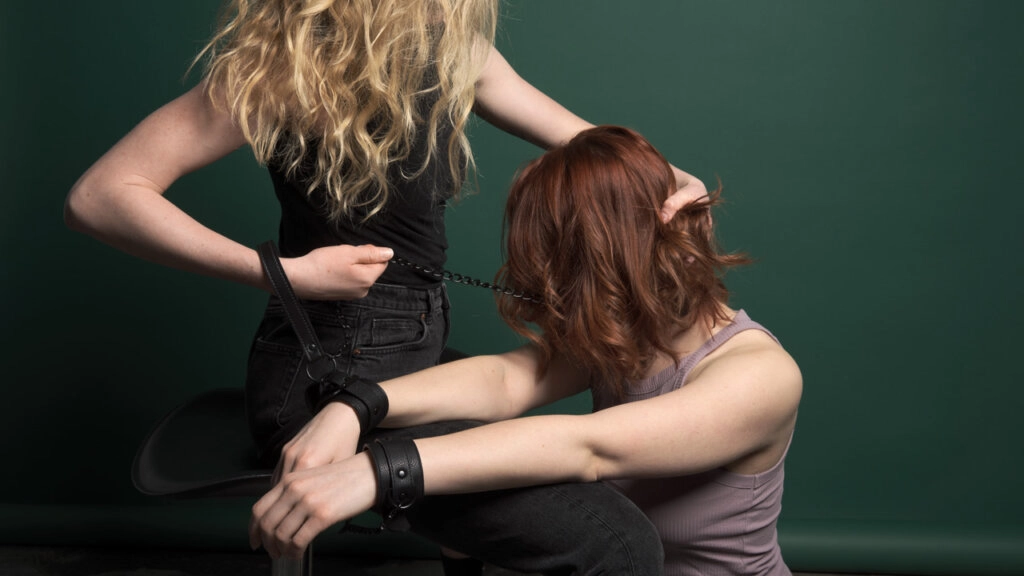
When Do You Use a Safeword or a Stop Sign?
A safeword or a stop sign is used when your or your partner's boundary has almost been reached.
This means that it’s perfectly normal to say no, even when it comes to BDSM, because it’s often all about exploration and challenge.
Your boundaries can change from day to day and hour to hour—among other things, it depends on the partner, situation, and emotions.
Something you’ve previously said ‘yes’ to may suddenly feel too intense, and something you’ve previously said ‘no’ to may be exactly what you feel like.
Therefore, safewords and stop signs are there to ensure your play is successful.

Plays Where ‘Stop’ Doesn’t Mean ‘Stop’
It may be that as a child you remember the feeling of being tickled so much that you screamed ‘No no no, stop!’, but as soon as it stopped, you wanted it to continue.
You can easily have that type of play as an adult. However, now adult privileges and responsibilities are part of it. If you want to know more about how to build a BDSM play, we have a blog post for you.
If you choose to use safewords instead of saying ‘no’ or ‘stop’, you have the opportunity to pretend that you don’t like it and can therefore say things like ‘No, don’t’ without it changing anything.
If you need a word for it, it’s called ‘consensual-non-consent’.

Consensual-non-consent (CNC)
As part of the play, it’s not about expressing pleasure, but rather the opposite.
Although it has been agreed upon beforehand, it appears as if the partner does not consent. It’s called consensual-non-consent (CNC). A kind of ‘no-does-not-mean-no’ play.
Using body language alone can make it difficult to decode the signals of a partner. Therefore, safewords are necessary so that both you and your partner are safe during the play.
BDSM does not have to include CNC play in any way, but it’s an option if you want to explore the feeling of being able to say no for fun.
It's about communication and what turns each of you on. If you want to play with CNC, the framework must, as always, be agreed upon in advance, and you must know which safewords apply.

Mutual Trust
Another misconception is that the submissive must have unconditional trust in the dominant one, and the dominant one can therefore do as they please.
In BDSM (and in all other sexual acts), it’s about mutual trust.
In order for the dominant to perform their role and the play to unfold, it’s crucial that the submissive says the safeword when it’s getting close to their boundary or when you reach it.
However, this does not mean that everything is allowed as long as the safeword isn’t used. Expectations must always be matched both before and after—and you must check in during the play. Among other ways, this can be done by asking the submissive to say the safeword so that it’s clear that they can still remember it and are able to use it.

Personal Boundaries: You Are Not Being Sensitive
The hardest part about setting boundaries is the fear of 'pushing the other person away' or acknowledging a defeat. But setting boundaries is never a defeat.
If you get close to a boundary, you may experience a feeling of being ‘sensitive’ or ‘a bad partner’, which of course isn’t true. Your boundaries are real and must be respected by both yourself and your partner.
When the safeword is used, it’s crucial that it’s well received and recognised.
In this way, it increases the security and trust between you, and it becomes easier to use the safeword a second time.
Changes in Boundaries
Personal boundaries can be very nuanced and change from day to day, from place to place, from partner to partner, and from minute to minute.
Even if you have a clear agreement on what is to happen, how, and when, your or your partner's boundaries can still change—some boundaries only become clear in the situation.
The play can suddenly become too overwhelming, or the communication can go too fast, and you can rarely predict where your boundary is with perfect accuracy.
You’re therefore not a bad partner by saying no.
On the contrary, you are doing yourself and your partner a great service by marking your boundary so that you are both confident in continuing the play.
Often, the use of safewords and stop signs helps to build trust between you and your partner, because you can trust the other person to say no if you reach a limit.
It's hard to say no, and it's something you need to practise. If you can just say a single word or make a hand gesture, it can make it easier to say no in a stressful situation.
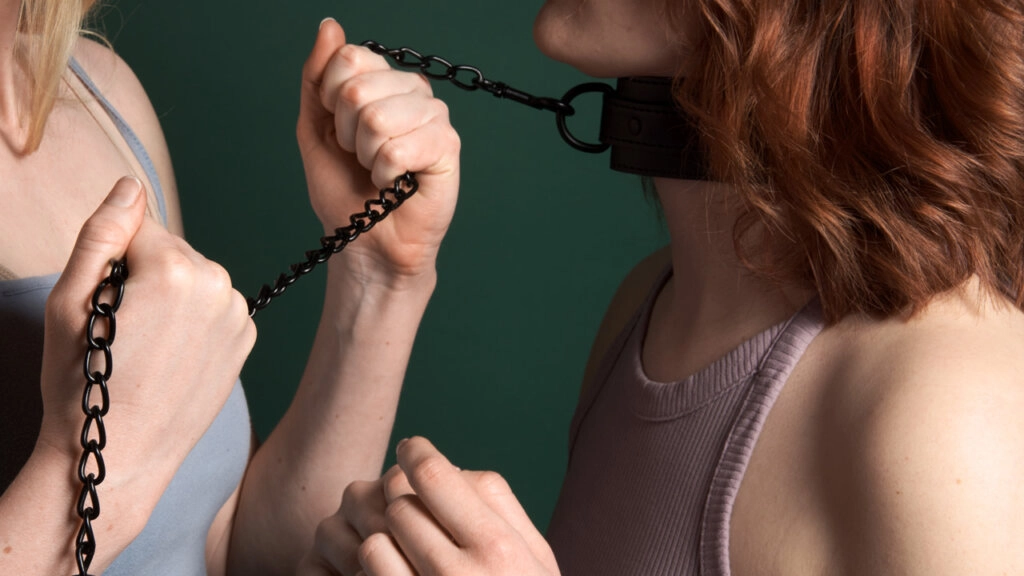
Suggestions for Choosing BDSM Safewords
In BDSM, a distinction is made between verbal and nonverbal safewords. That is, safewords and stop signs.
It's also a good idea to have a word that means 'Beware, I'm close to my boundary', where the play doesn’t have to be paused when it's said.
The Traffic Light Model
An obvious choice is the traffic light model, so you use RED, YELLOW, and GREEN as your pointers.
RED = STOP
YELLOW = SLOW
GREEN = CONTINUE
Along the way, the dominant can check in with the submissive and ask ‘What colour are you in?’, to which the submissive can answer, for instance, ‘Green’, if they aren’t close to a boundary, and then the play continues unhindered.
It’s a manageable way to check in on your partner along the way and remind them to notice.
Of course, it’s important to say red or yellow as soon as it becomes necessary, even if no-one has asked.
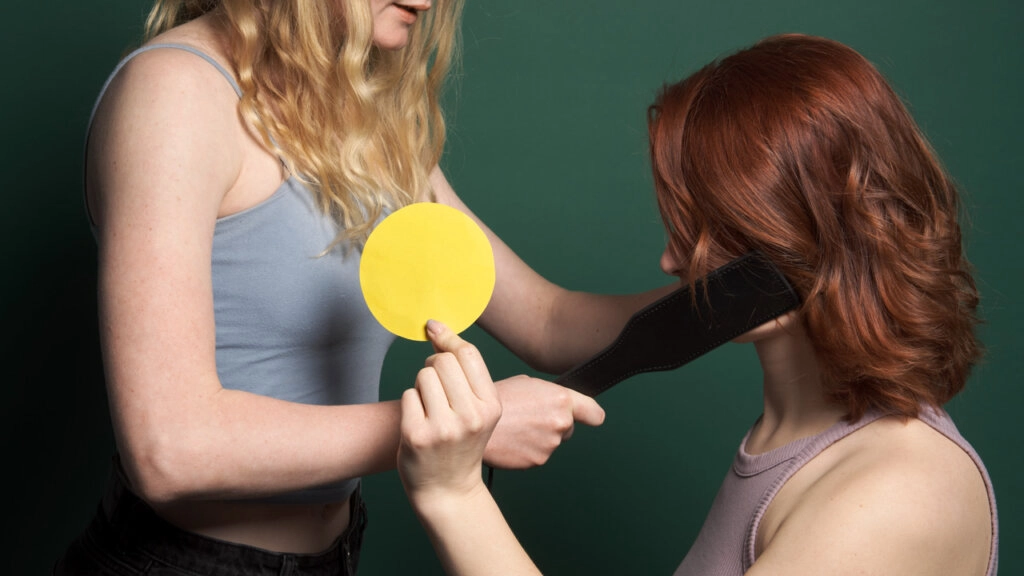
International Safewords
Most people choose a BDSM safeword, which you most likely won’t say by accident in a sexual context, for example 'marshmallow' or 'pineapple'.
In most BDSM clubs and associations in Europe, the common safeword is CIRCUS.
If you forget your safeword, it’s just as valid to just say ‘safeword’ or ‘stop word’.
In wrestling, you use the ‘tap-out’, which are two quick, hard taps on the floor. It makes a loud sound which makes it easier to detect.
We elaborate on this in the next part, as there are several different types of non-verbal BDSM safewords.

Non-verbal Safewords (Stop Signs)
For some, it’s difficult to use direct words, as they become very non-verbal when in a sexual context.
You may also find yourself in a situation where it’s not possible to speak, for example if you are short of breath, have a ball gag in your mouth, or are lying with your head in a pillow.
You can be so full of impressions that it can be hard to say words. Or it can feel overwhelming to break the silence with your voice.
Here, the best option is to use non-verbal safewords.
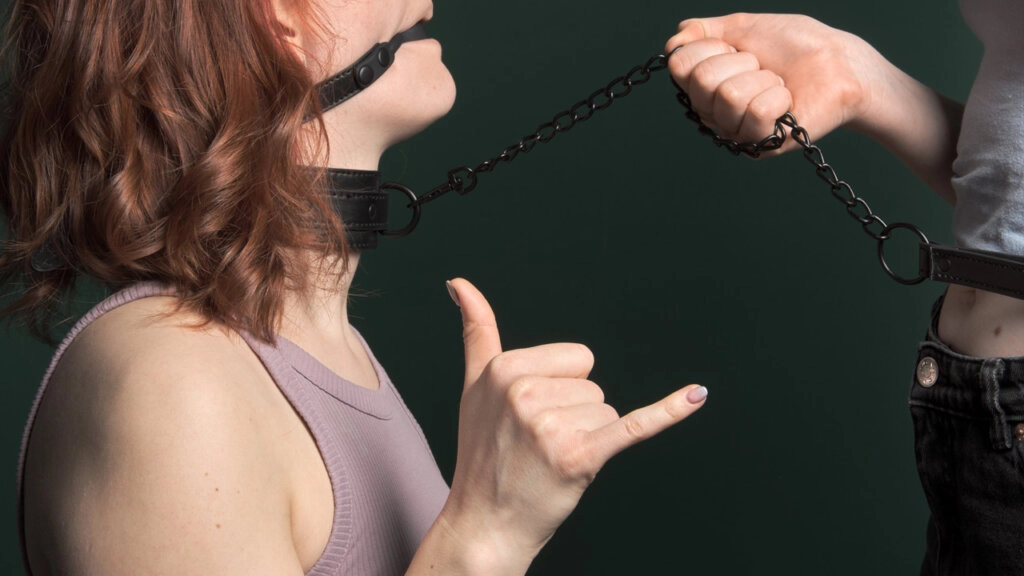
Tap-out
To return to the ‘tap-out’, it can easily be used in BDSM play, where you clearly tap on the floor, wall, or whatever you are near, to mark ‘no more of that, thanks’, ’you are very close to my boundary’, or ’my boundary has been reached’.
The ‘tap-out’ can be both heard and seen. In addition, the benefit is that if you can reach your partner physically, you can use the tap-out on their body so they clearly feel it.

Hand Sign
If the non-verbal safewords work best for you, you can select specific hand signs that mean stop.
For example, it could be quickly opening and closing your hands, or you could use the classic hand sign for ‘stop’ by stretching the arm in front of you and bending the wrist up so that a clear distance is created.
In stressful situations, it can be difficult to physically say stop verbally, but with the non-verbal safewords, you have an opportunity to decode the situation.
The non-verbal safewords can be harder to notice. Therefore, it’s important that you as the dominant keep an eye out for these on an ongoing basis, and that you as the submissive make the sign as clearly as you can.
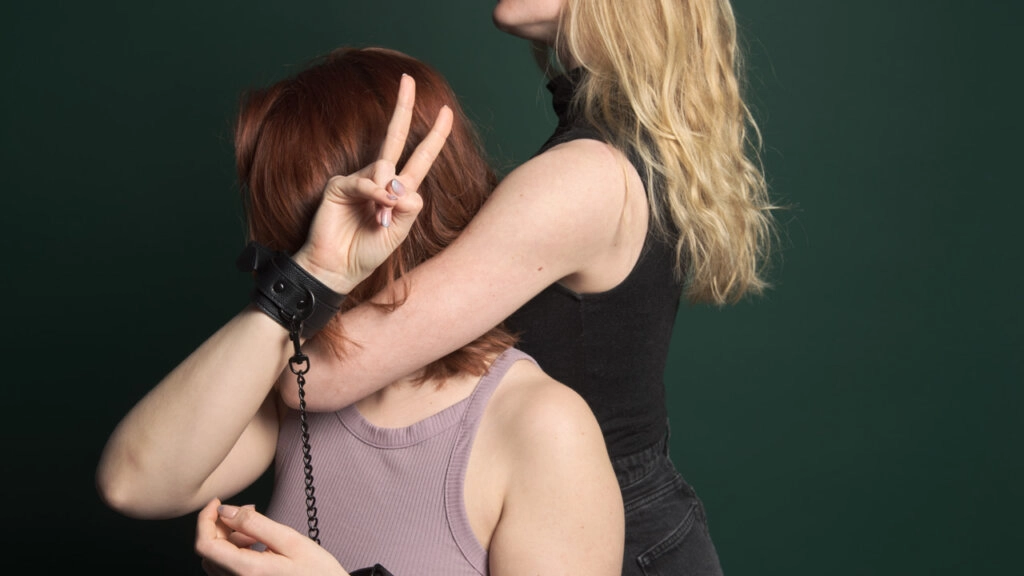
Tip: The tap-out sign can also be used to communicate that something more insignificant is wrong. If your partner has a hard grip on your arm, you can tap on their hand. Once the grip has been loosened, play can continue without the mood changing drastically.
Normal Consent
The safewords in your kinky plays can also easily have the meaning they already have, so ‘stop’ means ‘stop’, and ‘untie me’ means ‘untie me’.
It doesn’t matter if you choose the safeword 'stop' or 'pineapple'. It just needs to be specified before the play starts so that no misunderstandings arise.
If you are new to BDSM, it’s especially a good idea to choose that ‘stop’ means ‘stop’. That way, you avoid having to remember the different words, and you become comfortable saying no.
Of course, it's still possible to say whole sentences, but it's nice to have a simple safeword to use for safety's sake.
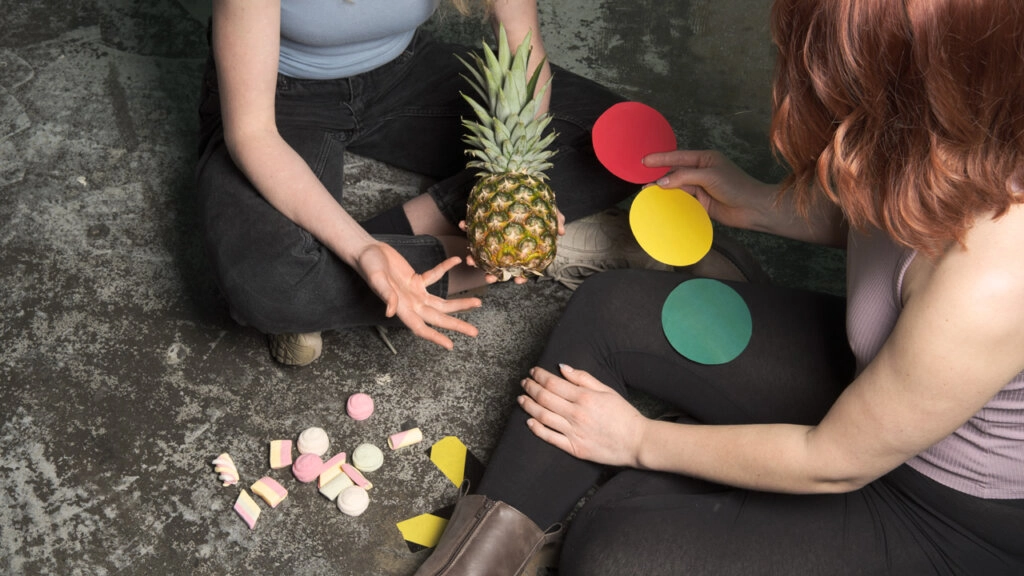
What About After?
If you think that what happens after a safeword has been used is uncertain and unmanageable, there is a risk that it will never be used.
Therefore, it’s just as important to agree on what should happen when a safeword is said as it is to agree on the word itself.
Think about whether you:
- want the play to end completely and for you to be held,
- want the play to not end completely, but for you to take a longer break and assess whether you want more,
- don’t want to be touched at all and instead be allowed to be alone until you yourself ask for care,
- something completely different works for you.
It can be difficult to guess what you need in a given situation, but it’s always good to agree on a starting point so that both parties feel confident in how the situation is handled.
This is the best way to make sure both parties are comfortable using safewords, as you both know what is required of each of you in the situation.

The Recipe for Agreeing on Stop Signals
Where do you start and what do you do?
We have a recipe with three simple steps, so you easily and quickly know what to do.
1. Choose a Safeword
Suggestions: STOP, BREAK, STOP—I MEAN IT, HELP, RED, MANGO, CIRCUS, MARSHMALLOW.
Agree on what you expect to happen when the safeword is used.
2. Choose a Caution Word
Suggestions: YELLOW, GRACE, I AM CLOSE TO MY BOUNDARY, SLOW DOWN, MEDIUM, PINEAPPLE, PINE TREE.
Agree on what you expect to happen when the caution word is used. Do you want to be pressured a little more or should the situation in question be scaled down and the play take another turn, but without stopping?
3. Select a Stop Sign
Suggestions: Open and close your hands quickly, use the tap-out, use the peace sign, wave with both hands, snap your fingers, jazz hands
Agree on what you expect to happen when the sign is used. Does it mean 'caution' or does it mean 'stop'? Do you have a sign for each word?

Pay Attention
It’s difficult to learn to set boundaries, but practise quietly until you are confident in using the stop signals in more stressful situations.
Saying no may in itself feel like crossing a boundary.
Always acknowledge your partner for using safewords and setting boundaries.
It’s important to make it as easy as possible for your partner to be honest with you. You do this by welcoming the words, desires, and needs that are articulated.
It’s the dominant's responsibility to make sure you have agreed on safewords, caution words, and a stop sign.
It’s the responsibility of the submissive to use the stop signals when they can sense that they are getting close to a boundary.
Both the dominant and the submissive are responsible for helping each other feel safe beforehand and to remind each other that it's okay to say no along the way.
A rule of thumb is: If you’re considering using a stop signal, then it's time to use it. It’s better to say no too early than too late.
Take good care of each other and have fun!